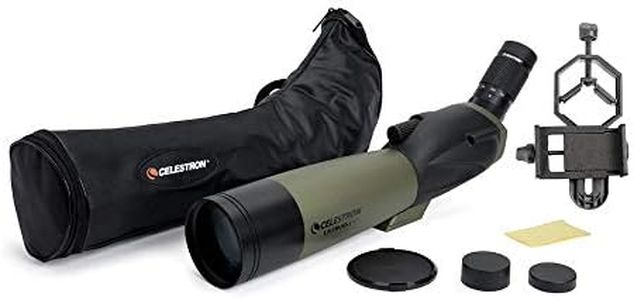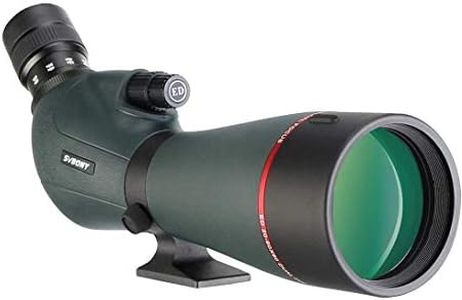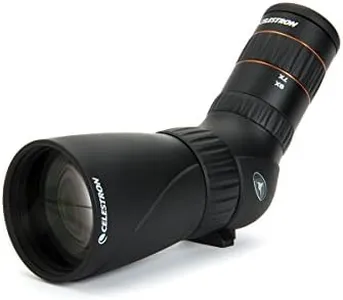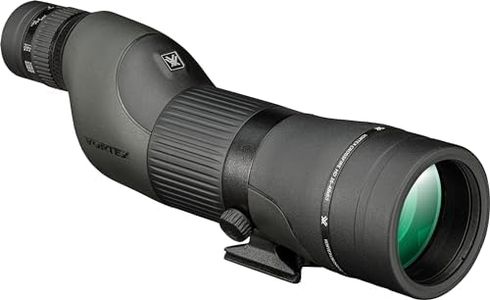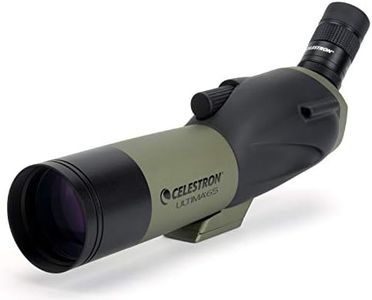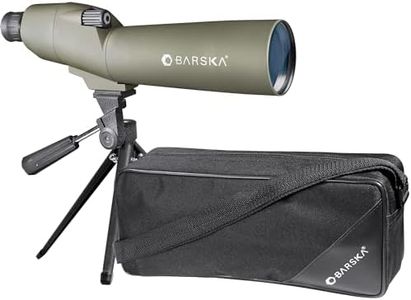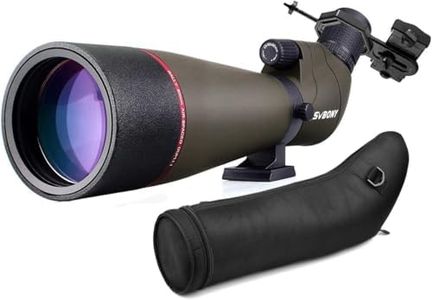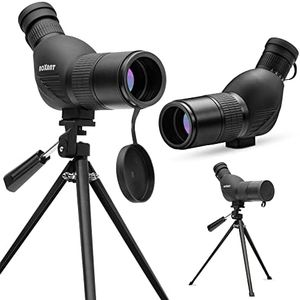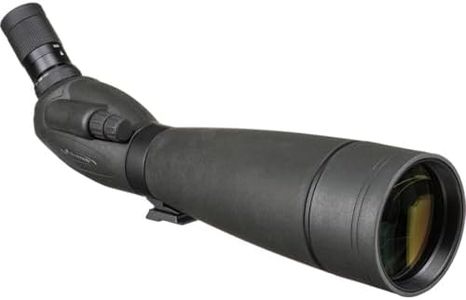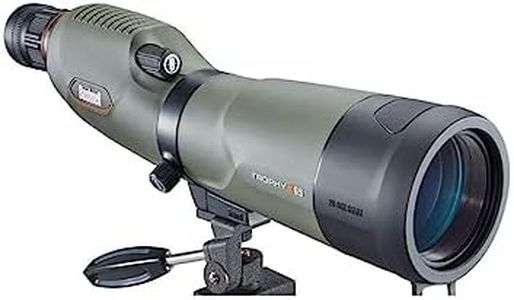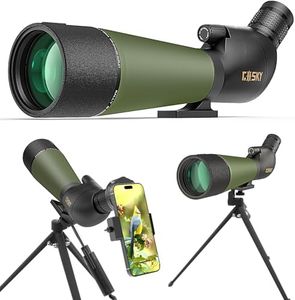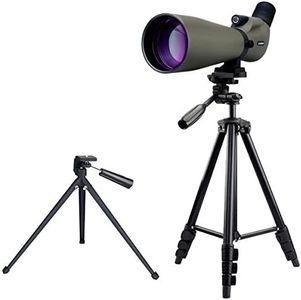We Use CookiesWe use cookies to enhance the security, performance,
functionality and for analytical and promotional activities. By continuing to browse this site you
are agreeing to our privacy policy
10 Best Bird Spotting Scopes
From leading brands and best sellers available on the web.By clicking on a link to a third party's website, log data is shared with that third party.
Buying Guide for the Best Bird Spotting Scopes
Choosing the right bird-spotting scope is all about balancing your viewing needs with the environment in which you'll be using it. Bird-spotting scopes, sometimes called spotting scopes, are designed to help you see distant birds clearly, and the right scope can make a huge difference in your birdwatching experience. Think about where you'll be watching birds (at the coast, in woodland, at a reserve), how far away birds typically are, how important clear details are for you, and how much you're willing to carry around. Your individual preferences and typical birding spots should be your main guidance.MagnificationMagnification refers to how much closer the scope makes distant objects appear. This is usually shown as a number like 20-60x, meaning the image can be zoomed from 20 times up to 60 times closer. More magnification lets you see birds further away but can make the image dimmer and harder to keep steady, especially at high zoom. Lower magnifications (15-30x) are bright, easy to hand-hold, and work great for closer or quickly moving targets. Higher magnifications (40-60x) reveal more detail but require a sturdy tripod and are best in bright daylight. When choosing, consider if you'll mostly watch birds at a distance or up close, and balance magnification with ease of use and image clarity.
Objective Lens DiameterThe objective lens diameter, measured in millimeters (such as 60mm or 80mm), determines how much light the scope can gather. Larger lenses collect more light, leading to brighter, clearer images, especially at high magnification or in low-light conditions like dawn or dusk. However, bigger lenses make the scope heavier and bulkier. Lenses around 60mm are versatile and portable, good for general use and travel. Larger 80mm or bigger lenses are suited for stationary viewing where brightness is most important. For most people, a scope with an objective lens between 60mm and 80mm is a good starting point—choose larger only if you need extra brightness and don’t mind extra weight.
Field of ViewField of view is how wide an area you can see through the scope, usually described in feet or meters at a specific distance. A wide field of view makes it easier to spot and track moving birds, especially when scanning areas. As magnification increases, field of view typically becomes narrower. If you often watch fast or active birds, or scan large areas like wetlands, a wider field is helpful. If your targets are usually stationary or at a known location, field of view can be narrower.
Optical Quality and CoatingsOptical quality depends on the types of glass and coatings used in the lenses. Good optics result in sharper, brighter images with more natural color and less distortion. Special coatings reduce glare and increase light transmission. High-quality glass (like ED or HD glass) is often found in more premium scopes and makes a difference if you want the clearest, truest view, especially for identifying subtle field marks or when viewing in challenging light. For casual use, standard optics may suffice, but if you value seeing fine detail and vibrant colors, look for scopes that emphasize quality glass and fully multi-coated lenses.
Eyepiece Type (Straight vs. Angled)Bird-spotting scopes come in straight or angled designs. A straight eyepiece lines up directly with the barrel, so you look straight through; this is intuitive for tracking birds on the same level and is good for beginners. An angled eyepiece is set at about 45 degrees, making it more comfortable for looking upward or sharing the scope among different users of varying heights. Choose a straight scope if you often track ground-level or fast-moving subjects, or prefer quick aiming. Choose an angled scope if you watch birds overhead, want to use the scope for long sessions, or share it with others.
Close Focus DistanceClose focus distance is the shortest distance at which the scope can focus clearly. Most scopes focus well at distances of 15-25 feet, which is sufficient for general birding. However, if you enjoy watching butterflies, insects, or birds that come very close, a scope with a shorter close focus distance will let you see them clearly. Think about your usual viewing range—if you rarely watch very close animals, this may be less important.
WeatherproofingBirdwatching often happens outdoors in unpredictable weather, so weatherproofing is a key feature. Look for scopes that are waterproof and fogproof, which are sealed against moisture and internal fogging. This ensures reliability whether you’re out in the rain, near water, or in humid or cold conditions. If you'll often use your scope in the field, prioritize robust weatherproofing to avoid disappointment during bad weather.
Weight and PortabilityA scope’s weight and size affect how easy it is to carry on long walks or trips. Lighter, more compact scopes are easier to use for travel or hiking, but sometimes have smaller lenses and less brightness. Heavier scopes with larger lenses usually stay at fixed spots or in your car. Choose a lighter, more portable option if you plan on covering a lot of ground, and a heavier model if you'll be in one spot for extended viewing.
